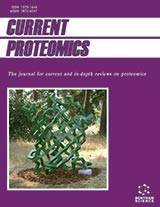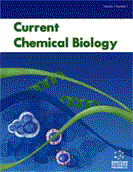Abstract
Glioblastoma multiforme (GBM: grade IV astrocytoma) is the most common but lethal form of brain cancer. The median survival time of GBM patients is only 15 months. Only a few predictive markers have been reported for prognosis and treatment.
This study integrates gene expression and protein-protein interaction data to search for pathways that are differentially regulated between long-term and short-term survivors of GBM patients. A novel objective function for greedy search was introduced in search for 47 significantly and differentially expressed sub-networks (SDES) or pathways in a greedy fashion. The resultant putative pathways (involving 156 genes) were tested for enrichment of known GBM cancer genes as well as GO terms related to “biological process.” Integration of gene expression profiles of GBM patients with a PPI network improves the recall rate of known GBM driver genes and shows the better GO enrichment in comparison to the conventional gene-set approach that is based solely on the expression data.
Keywords: Brain, cancer, GBM, gene, integration, pathway, PPI, protein, sub-network.
Current Bioinformatics
Title:Mining of Network Markers for Brain Tumor from Transcriptome and Interactome Data
Volume: 8 Issue: 3
Author(s): Jongkwang Kim
Affiliation:
Keywords: Brain, cancer, GBM, gene, integration, pathway, PPI, protein, sub-network.
Abstract: Glioblastoma multiforme (GBM: grade IV astrocytoma) is the most common but lethal form of brain cancer. The median survival time of GBM patients is only 15 months. Only a few predictive markers have been reported for prognosis and treatment.
This study integrates gene expression and protein-protein interaction data to search for pathways that are differentially regulated between long-term and short-term survivors of GBM patients. A novel objective function for greedy search was introduced in search for 47 significantly and differentially expressed sub-networks (SDES) or pathways in a greedy fashion. The resultant putative pathways (involving 156 genes) were tested for enrichment of known GBM cancer genes as well as GO terms related to “biological process.” Integration of gene expression profiles of GBM patients with a PPI network improves the recall rate of known GBM driver genes and shows the better GO enrichment in comparison to the conventional gene-set approach that is based solely on the expression data.
Export Options
About this article
Cite this article as:
Kim Jongkwang, Mining of Network Markers for Brain Tumor from Transcriptome and Interactome Data, Current Bioinformatics 2013; 8 (3) . https://dx.doi.org/10.2174/1574893611308030005
| DOI https://dx.doi.org/10.2174/1574893611308030005 |
Print ISSN 1574-8936 |
| Publisher Name Bentham Science Publisher |
Online ISSN 2212-392X |
 11
11
- Author Guidelines
- Bentham Author Support Services (BASS)
- Graphical Abstracts
- Fabricating and Stating False Information
- Research Misconduct
- Post Publication Discussions and Corrections
- Publishing Ethics and Rectitude
- Increase Visibility of Your Article
- Archiving Policies
- Peer Review Workflow
- Order Your Article Before Print
- Promote Your Article
- Manuscript Transfer Facility
- Editorial Policies
- Allegations from Whistleblowers
Related Articles
-
Recent Advances in Oral Pulsatile Drug Delivery
Recent Patents on Drug Delivery & Formulation An Instrument-Based Screening Assay for DNA-Targeted Anticancer Drugs Using Resonance Light Scattering
Combinatorial Chemistry & High Throughput Screening Cardiac Dys-Synchronization and Arrhythmia in Hyperhomocysteinemia
Current Neurovascular Research Osteopontin: An Effector and an Effect of Tumor Metastasis
Current Molecular Medicine Nuclear Medicine: from Photons to Physiology
Current Pharmaceutical Design Ozone Dosage Effect on C6 Cell Growth: in Vitro and in Vivo Tests
Anti-Cancer Agents in Medicinal Chemistry Imaging of Muscarinic Receptors in the Central Nervous System
Current Pharmaceutical Design Unveiling the Transient Protein-Protein Interactions that Regulate the Activity of Human Lemur Tyrosine Kinase-3 (LMTK3) Domain by Cyclin Dependent Kinase 5 (CDK5) in Breast Cancer: An in silico Study
Current Proteomics Purine-Scaffold Hsp90 Inhibitors
Current Topics in Medicinal Chemistry Telomeres, Genomic Instability, DNA Repair and Breast Cancer
Current Medicinal Chemistry - Anti-Inflammatory & Anti-Allergy Agents Cancer T Cell Immunotherapy with Bispecific Antibodies and Chimeric Antigen Receptors
Recent Patents on Anti-Cancer Drug Discovery Mesenchymal Stem Cells for Anti-Cancer Drug Delivery
Recent Patents on Anti-Cancer Drug Discovery Estrogenic Effect of <i>Salvia officinalis</i> Extract on Reproductive Function of Female Mice and Identification of Its Phenolic Content
Combinatorial Chemistry & High Throughput Screening Meet Our Editorial Board Member
Recent Patents on Biotechnology 1-O-Octadecyl-2-O-Methylglycero-3-phosphocholine (Edelfosine) and Cancer Cell Invasion: A Short Review
Anti-Cancer Agents in Medicinal Chemistry Vesicovaginal Fistula
Current Women`s Health Reviews Naturally-occurring Dimers of Flavonoids as Anticarcinogens
Anti-Cancer Agents in Medicinal Chemistry Trends in the Exploration of Anticancer Targets and Strategies in Enhancing the Efficacy of Drug Targeting
Current Molecular Pharmacology The Development of a Rapid, Simple and Sensitive LC-MS/MS Method, to Guide Clinical Dosing, for the Analysis of 5-Fluorouracil in Human Plasma
Current Pharmaceutical Analysis Basic Mechanisms Involved in the Anti-Cancer Effects of Melatonin
Current Medicinal Chemistry

















.jpeg)








